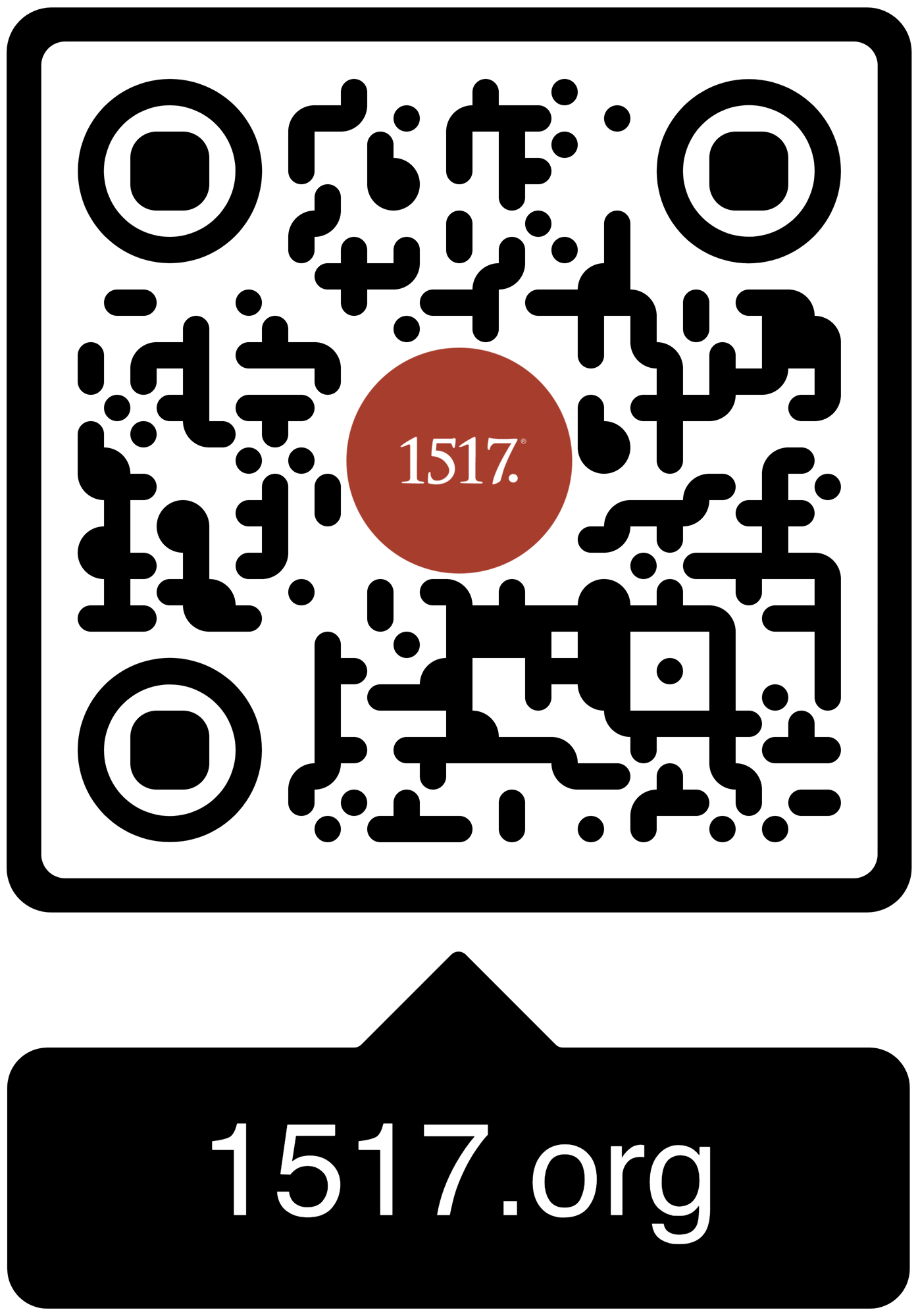Protestants, in my view, don’t suffer from a Goldilocks problem. They have an arrogance problem.
Brad East’s First Things article, Goldilocks Protestantism, published earlier this year, has been making waves for its provocative claim that only two Christianities exert real influence today: “evangelical” and “catholic.” These shouldn’t be confused with Roman Catholics or Evangelicals, from which they are named. East’s evangelicals are low-church, creedless, with no bishops or priests, and they don’t practice infant baptism. His catholics are high-church, sacramental, led by bishops, and rooted in ancient tradition. They venerate icons and baptize babies.
Caught between them is a shrinking middle: what East calls “Protestants,” “Magisterial” or “Protestant proper.” This group borrows from both sides but resists full identification with either. Protestantism, he argues, is a “Goldilocks” faith—trying to get everything “just right”—but its balancing act is unstable and increasingly irrelevant.
So, is Protestantism dying? Or is East’s analysis more alarmist than accurate? I want to briefly outline his argument, raise a few concerns, and offer my own take.
Summary of East’s Argument:
East’s argument for the decline and fall of Protestantism is made up of four parts.
- Protestant traditions are declining, not growing.
- Globally, Protestants make up only 10 percent of global Christians. They are not influential nor are their churches accessible to most.
- Protestant churches mainly survive either by accommodating themselves to evangelicals or by going liberal/progressive, both of which dilute Protestant identity.
- Revival is unlikely because Protestantism depends on an inheritance that it either won’t or can’t protect.
Decline Isn’t Death:
East’s first two claims are backed by real data, but are his conclusions warranted? Historian Daniel K. Williams, in his article, The Greatly Exaggerated Death of Protestantism, notes that Protestants have always been a global minority, often just 10–20% of Christians. That hasn’t stopped Christianity from thriving. The growth of Christianity in the Global South, fueled largely by Catholics and charismatic evangelicals, shows that Christianity on the whole is not in decline. William’s point is that the number of global Protestants has remained historically stable.
Protestantism has maintained its resilience despite its minority status. It has been 14 years since the study East quotes was taken, and yet Protestants are still around, even exerting “renewed interest” as East points out by those not in its traditions.
The Goldilocks Problem:
The titular point East makes, what he will call the “Goldilocks Protestantism,” is that Protestantism offers an unsustainable vision because it is inherently stubborn and therefore suffers from instability. East sees Protestantism’s middle-way posture as a fatal flaw. Protestants want the creeds, sacraments, and structure—but without bishops, saints, or icons. For him, that makes them inflexible. Unable to bend, they either break or slide into evangelicalism or liberalism. Protestantism, he argues, lacks staying power because it refuses to fully commit to one of the major streams. Protestantism is an option that’s not really an option if you are evangelical or catholic. And that’s what makes it both a minority and in decline—it’s not the best of both worlds, it’s the worst of both worlds, and part of that problem lies within the makeup of Protestantism itself.
This feature of Protestantism means it’s always a minority. And that minority status tempts it in ways that lead to its decline and unsustainability. In order to be effective and relevant,
Protestantism is always tempted to accommodate itself to one side or the other by adapting itself: either becoming more liberal/progressive or siding with more conservative-leaning evangelicals. Both types of accommodation, East argues, lead to a kind of loss for Protestantism—a loss of pure Protestant identity, further exacerbating the decline. But every faith tradition navigates cultural pressures. Catholics and evangelicals also adapt. To single out
Protestants as uniquely compromised or stubborn ignores the shared challenges of contextual theology. There’s nothing inherently unstable about doctrinal precision, nor does adapting worship style—yes, even wearing jeans as a pastor—signal the collapse of Protestant identity.
East disqualifies certain churches as “truly Protestant” based on aesthetics or ecclesial structure. But Protestant identity rests on deeper foundations: high regard for Scripture, confessions, the gospel rightly preached, and a sacramental life grounded in historic doctrine.
There’s nothing inherently unstable about doctrinal precision, nor does adapting worship style—yes, even wearing jeans as a pastor—signal the collapse of Protestant identity.
My own tradition—the Church of the Lutheran Brethren—doesn’t fit neatly into East’s categories since we adhere to Lutheran doctrine but have a low-church style of worship. For East, we must be “not really Protestant,” which, of course, we find a silly accusation.
Why Not Revival?
East concludes that Protestant revival is unlikely because evangelicals who admire Protestant doctrine aren’t likely to switch. But that seems inconsistent. If Protestants can slide into evangelicalism or catholicism, why can’t the reverse happen?
For East, the jean-wearing Protestant pastor has sold out to evangelical Christianity. He’s not really a Protestant anymore. While not all Lutherans will disagree with him, for my part (and it’s not my preference to see pastors in jeans), the jean-wearing pastor stands just as much in the Lutheran tradition as his cope-clad colleagues. That’s because what makes a Protestant a Protestant is not meeting an arbitrary checklist of attributes, but the preservation and promulgation of the doctrines and dogmas of Protestant heritage: the high view of Scripture, the importance of creeds and confessions, the role of the will in salvation, and the proper preaching and teaching of the gospel. Luther used a liturgy and Calvin wore a robe—but these features of Protestantism do not make Protestantism Protestant. For every robe-wearing Calvinist, the accusation could be an accommodation to Rome, to every jean-wearing Lutheran, the accusation could be an accommodation to evangelicals.
What makes a Protestant a Protestant is not meeting an arbitrary checklist of attributes, but the preservation and promulgation of the doctrines and dogmas of Protestant heritage: the high view of Scripture, the importance of creeds and confessions, the role of the will in salvation, and the proper preaching and teaching of the gospel.
In short, it’s very hard to actually define Protestantism accurately. Even East has trouble with it, unsure of where to put Anglicans (he’s not alone), but there are just too many differences within the matrix of confessing Protestantism to make his definitions very convincing or stable.
East argues that while some evangelicals occasionally have a fascination and appreciation for Protestant doctrine and traditions, this appreciation is not likely to ever rise to the level of team-switching—the evangelical will remain an evangelical no matter how much he respects Luther or Calvin. If he is correct on this point, it would seem evangelical interest in rooted forms of Christianity may be an attempt at inner-evangelical reform, a way to stop or slow down the often reactive and politicized excesses of their own tradition that younger evangelicals have rightly grown tired of in recent decades East’s forecast contains insight, but his diagnosis feels overstated. Protestantism is messy, complex, and always reforming. That’s not a weakness—it’s the tradition’s enduring strength. Yes, Protestantism faces serious challenges. But to deny its enduring appeal—or the Spirit’s power to renew it—is to underestimate the tradition and the God who sustains it.
A Contrasting Analysis:
In his book, Bad Religion, Ross Douthat writes, “The story of Christianity has always featured unexpected resurrections. Eras of corruption give way to eras of reform; sinners and cynics cede the floor to a rush of idealists and saints; political and intellectual challenges emerge and then are gradually surmounted.” This is a good reminder both of the dangers of forecasting and the power of God to work and will as he chooses.
East’s intuition is, I think, correct. Protestants do need a wake-up call to their decline, but this decline is overstated by East and not historically demonstrative. Protestants, on the other hand, should not assume their tradition is guaranteed, at least not as we know it today. And we must not make too much of Protestant uniqueness. Every denomination and tradition is changed by the cultural crucibles they find themselves in. In his book, The Old Religion in a New World, historian Mark Noll makes the point that, within the American context, all religions (not just Christianity) have been influenced and changed by what he calls “Americanization.”
In the book, Noll predicts that denominationalism will become less important with a more ideological Christianity replacing it. Perhaps he is correct, and ideology will win out over structured denominationalism. There is emerging evidence he may be right. But even in this context, Protestant influence and teachings will not pass out of existence. Institutional Protestantism—whatever that even means (it still seems hastily defined by East, and hard to define by anyone else)—will change. It has to, because that’s the nature of church in culture.
The real questions are, what will the changes be, and are they for the better or worse?
East thinks they are for the worst, a massive extinction of a tradition (he implies) is not easily available to him (or other seekers) in Texas, but should be. I, however, remain more optimistic, if not sobered by the reality of Protestant fears and prejudices (and a not too small amount of arrogance).
I have no easy answer, no prescription or be-all, end-all answer to the question of Protestant survival. But I do agree with Noll that cultural influence, or in our context, “Americanization,” is unavoidable for everyone. Therefore, the question doesn’t really come down to retreat or advance into culture—since either choice does not hold back the waters of Americanization—but of what kind of people we want to form for the future. That is actually a theological question as much as a practical one, for how one answers it reveals the heart of what drives one’s tradition.
If conservative Protestantism suffers from any truly grave danger, for me it is its general unwillingness to engage in mission and evangelism. Most Protestant churches long relied on birth-rates and ethnic communities to sustain them, something that is all but gone in North America. Rejecting revivalism on theological grounds, Protestants have not historically been willing to be innovative in strategies and programs to reach the lost in their local context. For many of them, supporting foreign missions (a worthy goal) has been the extent of their mission program.
Protestants, in my view, don’t suffer from a Goldilocks problem. They have an arrogance problem. Actually, I think this is what East is getting at when he frames the problem as a Goldilocks problem, but by framing the problem as one of getting things “just right,” he misdiagnoses the malady.
Rejecting revivalism on theological grounds, Protestants have not historically been willing to be innovative in strategies and programs to reach the lost in their local context.
The real problem is that Protestants feel, and have always felt, their minority status as William’s research shows—but what has perhaps changed recently is that such a status feels more threatening to them. As a global minority, Protestantism has historically existed within a supportive ethnic enclave and/or been aligned with a supportive political state. Thus, it could in some sense always take for granted its minority status—it was rarely threatened by competing groups from within. It had homogeneity, power, and money behind it. But no more.
The state churches are shells of what they were, and governments, even those with official state religions, tend to create more problems for conservatives than solutions. Protestants in America were divorced from these centers of power early on, and therefore learned to adapt to the isolation from the state, but that process necessarily brought them in closer alliance with what East calls evangelical Christianity—or liberalism if they took the other route. There’s power in numbers, and nature abhors a vacuum.
Today, Protestants have to learn something the Charismatics, Roman Catholics, and Evangelicals have been doing for a very long time: strategies for reaching the lost. This is not to say that Protestantism never cared about the lost—far from it! It’s just that their state-sponsored patronage and ethnic enclaves gave them a kind of inertia that acted to distract them from the hard work of thinking about how to reach non-Christians in their own cultures and contexts.
Today, Protestants have to learn something the Charismatics, Roman Catholics, and Evangelicals have been doing for a very long time: strategies for reaching the lost.
Resistance to ideas like contextualization, revivalism, personal evangelism on the right, and liberation theologies, social gospel strategies, and embrace of the poor and minorities on the left, are good examples of what East dubs the Goldilocks problem. Though the problem isn’t because Protestants want to get things “just right,” but that they believe they already are right. In my opinion, the issue doesn’t come down to Protestant hyper-focus on theological precision.
That’s the excuse. The real issue is an arrogance that anything outside of the Protestant tradition is suspected of being wrong, and that anyone who begins to adapt it is engaging in some kind of thinning-out of what is holy, pure, and true. Ironically, this Protestant arrogance is what East says condemns Protestantism to extinction. For him, they can’t adapt or they lose themselves, but if they don’t, they die from attrition. Either way, they lose, and for East, this has always been the trouble with Protestantism. What I find problematic on this point is that East is relying on the kind of Protestant rationale that he says suffers Protestantism to decline. He laments adaptations within his own tradition, the Church of Christ. [1]
The arrogance of Protestantism is a failure to consider its own reformation at times, to stretch its own tradition and theology in ways that bring old, stable truths into new horizons—without compromising them. Ironically, if Noll is correct about the effects of culture on churches, resistance to culture creates just as much change (theological change too) as engagement. That’s because whether it be a reaction or proaction to culture, one is shaped and changed simply by being “in” culture.
Many Protestants decry Rome and its theology while at the same time grow weary of evangelical innovation, which always seems to come at the cost of good theology. So, the old alliances are breaking down as Protestants once again consider retreat or engagement. Retreat means shrinking churches and dying denominations; engagement means risking theological pollution or accommodationism.
But the reason that Protestants tend to see these as the only options is because they have not really developed their own theology of mission and cultural engagement. In my own Lutheran tradition, many may reply that this is not true, after all, Lutherans have a robust theology of mission and engagement in the doctrine of the Two Kingdoms. They have a theology of vocation.
But this is not what I mean. Two Kingdom’s theology is the map, not the route that must be travelled within it to arrive at an agreed-upon destination. Two Kingdoms theology is an explanation about how to negotiate the relationship between church and state, secular and sacred, it is not a strategy to bring the lost into the saving grace of God. A theology of vocation sets out a purpose, it gives structure and permission to live life a certain way, but it does not equip or inspire people to go tell their neighbors about Christ. It does not automatically present a vision for the Church-sent, to the lost and dying who need the beautiful feet of those who will deliver them Good News. Vocation gives an identity, a calling, but it doesn’t develop a plan or mission to reach one’s local culture for Christ.
I don’t have the answers for how Protestants should awaken from their decline, but I think they are awakening. East is right to point this out, even if I think his assessment is overblown. Still, if I could recommend one thing for Protestants to do, it would be to use all the valuable assets of their tradition to develop theologies of mission or evangelism, and then courageously carry them out in their local churches. In the end, it is the local church, not the institutions themselves, that truly carries the future of Protestant survival—that, and the generous gift of God’s grace.
[1] For example, he laments the “absorption” of the CoC by American evangelicalism. See, https://www.bradeast.org/blog/coc-catholic





